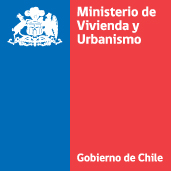Public space: the management dimension / Matthew Carmona, Claudio de Magalhaes, Leo Hammond
Tipo de material: TextoIdioma: Inglés Detalles de publicación: New York: Routledge, 2008Descripción: 232 p.: il. colISBN:
TextoIdioma: Inglés Detalles de publicación: New York: Routledge, 2008Descripción: 232 p.: il. colISBN: - 9780415391085
- 711.4:35 C287p 2008
| Tipo de ítem | Biblioteca actual | Colección | Signatura topográfica | Copia número | Estado | Fecha de vencimiento | Código de barras | |
|---|---|---|---|---|---|---|---|---|
 Monografía
Monografía
|
Centro de Documentación Estantería | Colección General | 711.4:35 C287p 2008 (Navegar estantería(Abre debajo)) | c.1 | Disponible | 0000123534208 |
Incluye bibliografía p. 215-223
1. Conceptualising public space and its management -- The use and nature of public space -- Public space through history -- Contemporary debates and public space -- Models of public space management -- 2. Investigating public space management -- One country, multiple endemic public space management problems -- One country, twenty innovative public space management authorities -- Eleven countries, eleven innovative cities: the context for open space management -- Eleveniinovative cities, many ways forward: the practice of open space management -- One iconic civic space: managing Times Square, New York -- Two linked iconic civic spaces: managing Leicester Square and Piccadilly Circus, London -- Theory, practice and real people.
In both the UK and the US there is a sense of dissatisfaction and pessimism about the state of urban environments and particulary with the quality of everyday public spaces. Explanations for this have emphasised the poor quality of design that characterises many new public spaces; spaces that are dominated by parking, roads infraestructure, introspective buildings, a poor sense of place, and which in different ways for different groups are too often exclusionary.
Yet many well designed public spaces have also experienced decline and neglect, as the services and activities upon which the continuing quality of those spaces depends have been subject to the same cuts and constraints as public services in general. The issues touch upon the daily management of public space, that is, the coordination of the many different activities that constantly define and redefine the characteristics and quality of public space.
This bokk draws on four empirical research projects to examine the questions of public space management on an internacional stage.They are set within a context of theoretical debates about public space, its history, contemporary patterns of use, and the changing nature of Western society; and about the new management approaches taht are increasingly being adopted.

